Garmin quatix 7 Sapphire marine GPS smartwatch review
The Garmin quatix 7 Sapphire watch features a stunning AMOLED screen and enough bells and whistles to start a miniature steam railway – but is it any good?

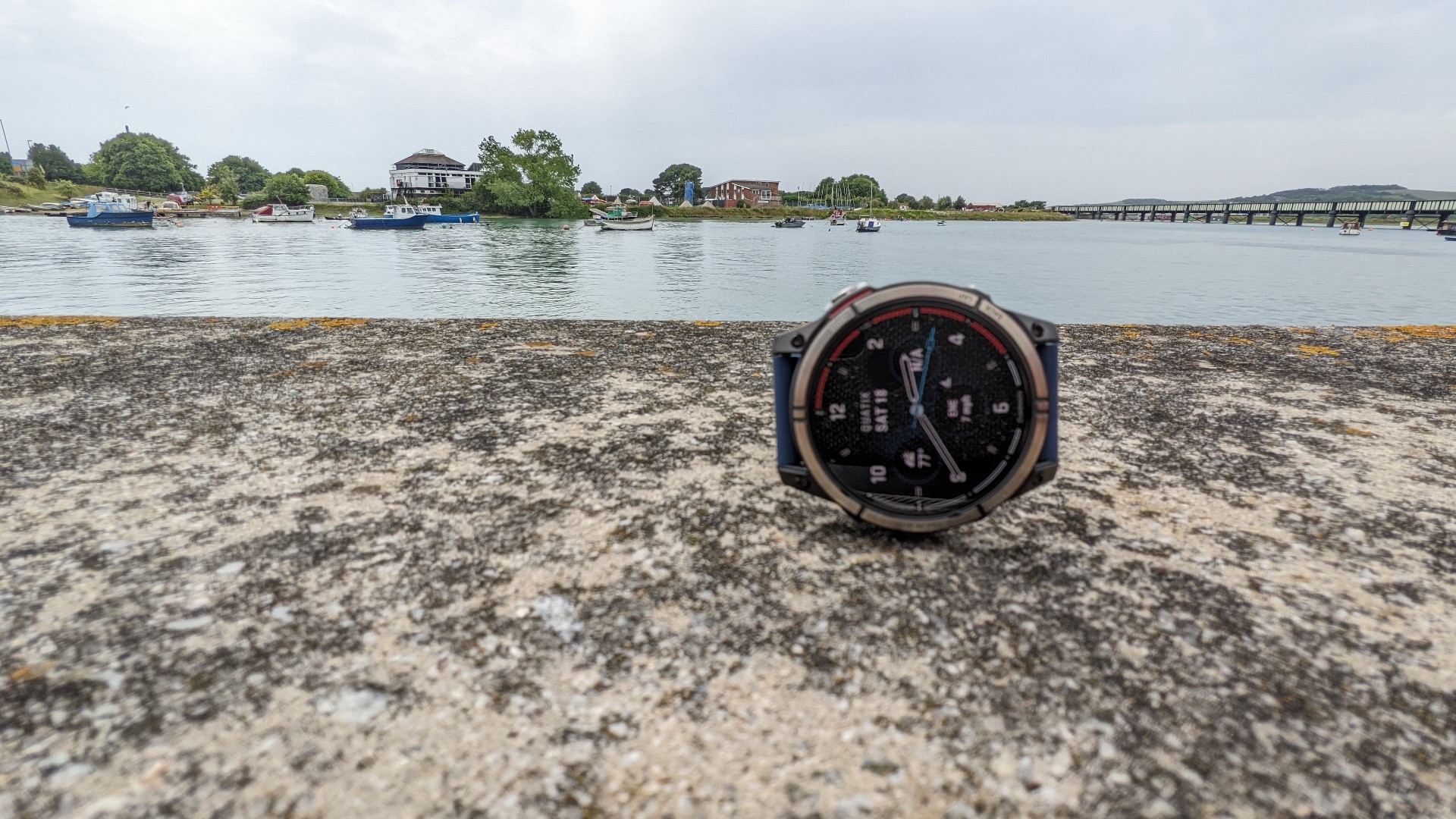
The Garmin quatix 7 Sapphire adds sophistication and marine tools to the already-solid Garmin fitness platform. New additions range from generally useful (tide times), to essential for boat owners (integration with Garmin chart plotters). The new AMOLED touchscreen brings a touch of class to a very capable package. Niche, but understated.
-
+
Upgrade to well-rounded watch
-
+
New AMOLED a winner
-
+
Tide times immensely useful
-
-
Battery life shorter
-
-
Some boat integrations somewhat niche
Why you can trust T3

The Garmin quatix 7 Sapphire is Garmin's latest upgrade to the company's 'Marine' multisport GPS smartwatch line. It adds in a bright AMOLED display with a touchscreen interface, a host of sea-specific tools, all layered on top of Garmin's existing multisport platform.
This is the brand behind a number of today's best outdoor watches, as well as most of the best hiking GPS trackers on the market, so it has plenty of expertise on hand. We were impressed by this watch's predecessor (read about that in our Garmin Quatix 6X Solar review), so how does this new addition match up? Here's my Garmin quatix 7 Sapphire review.
Garmin quatix 7 Sapphire Review: price and release date
The Garmin quatix 7 Sapphire is the middle child in Garmin's updated marine watch lineup, with a cheaper, non-AMOLED 'Standard' version below (£599.99 / US $699.99 / AU $1,099), and a 'solar' 7X version above (£1049.99 / US $1,199.99 / AU $1,899).
The Garmin quatix 7 Sapphire was launched in April 2022, and is available now for £899.99 / US $999.99 / AU $1,399. You can get a taste of some alternatives from this brand in our guide to the best Garmin watches.
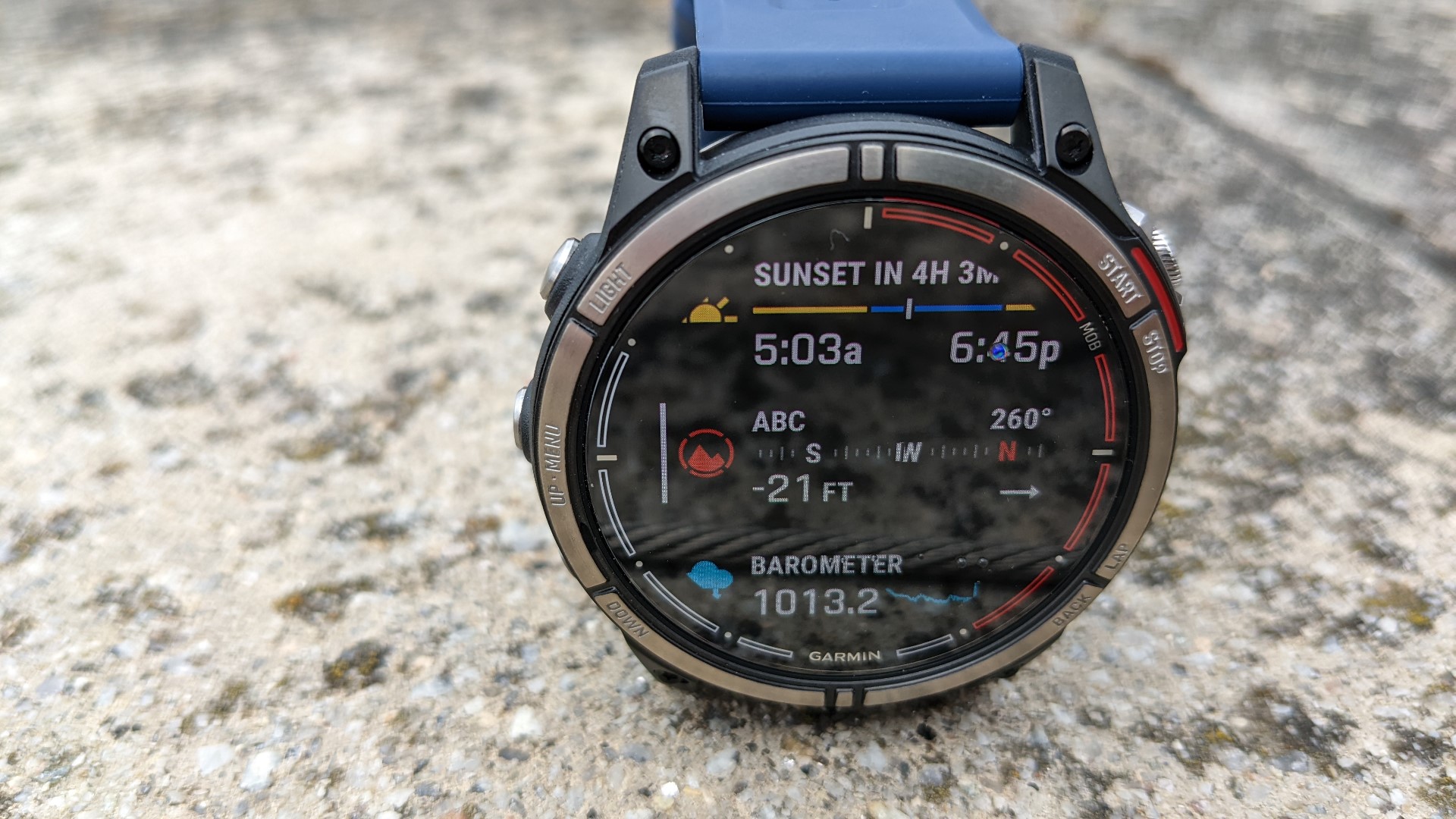
Garmin quatix 7 Sapphire Review: design and build
At first sight, the Garmin quatix 7 sapphire looks very similar to previous quatix models, the standard Garmin three buttons on the left, two on the right configuration. The strap is a 22mm quickfit version, so can be easily switched out by the user, and there’s a familiar-looking bezel protecting the front of the watchface. So far so normal.
It’s only when you wave a hand near the sleeping face that it becomes apparent this is a brand new screen – an OLED touch number at that. It’s bright enough to deal with sunny situations (fortunately for a marine watch), and is fronted by a Sapphire lens, which is tougher than most.
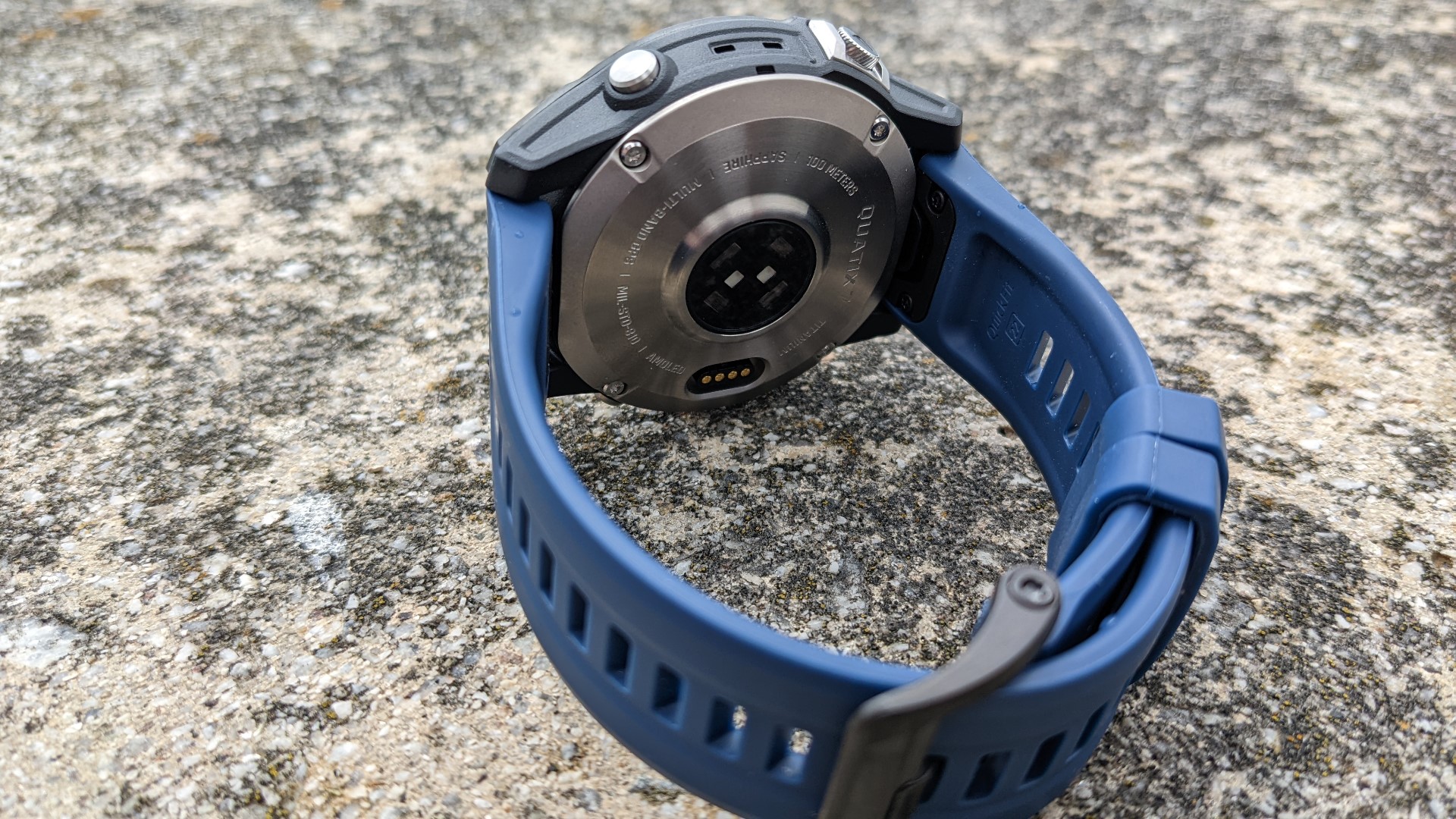
The watch body is fibre-reinforced polymer, but the back – dominated by the sensor array and charging port – is titanium, which is a nice touch, both from a premium and weight perspective. Weighing in at 70g (47g with case only) this isn’t a heavy or particularly large watch, the display being 1.3" (33.02mm) diameter – substantial, but far smaller than some in Garmin’s range.
Get all the latest news, reviews, deals and buying guides on gorgeous tech, home and active products from the T3 experts
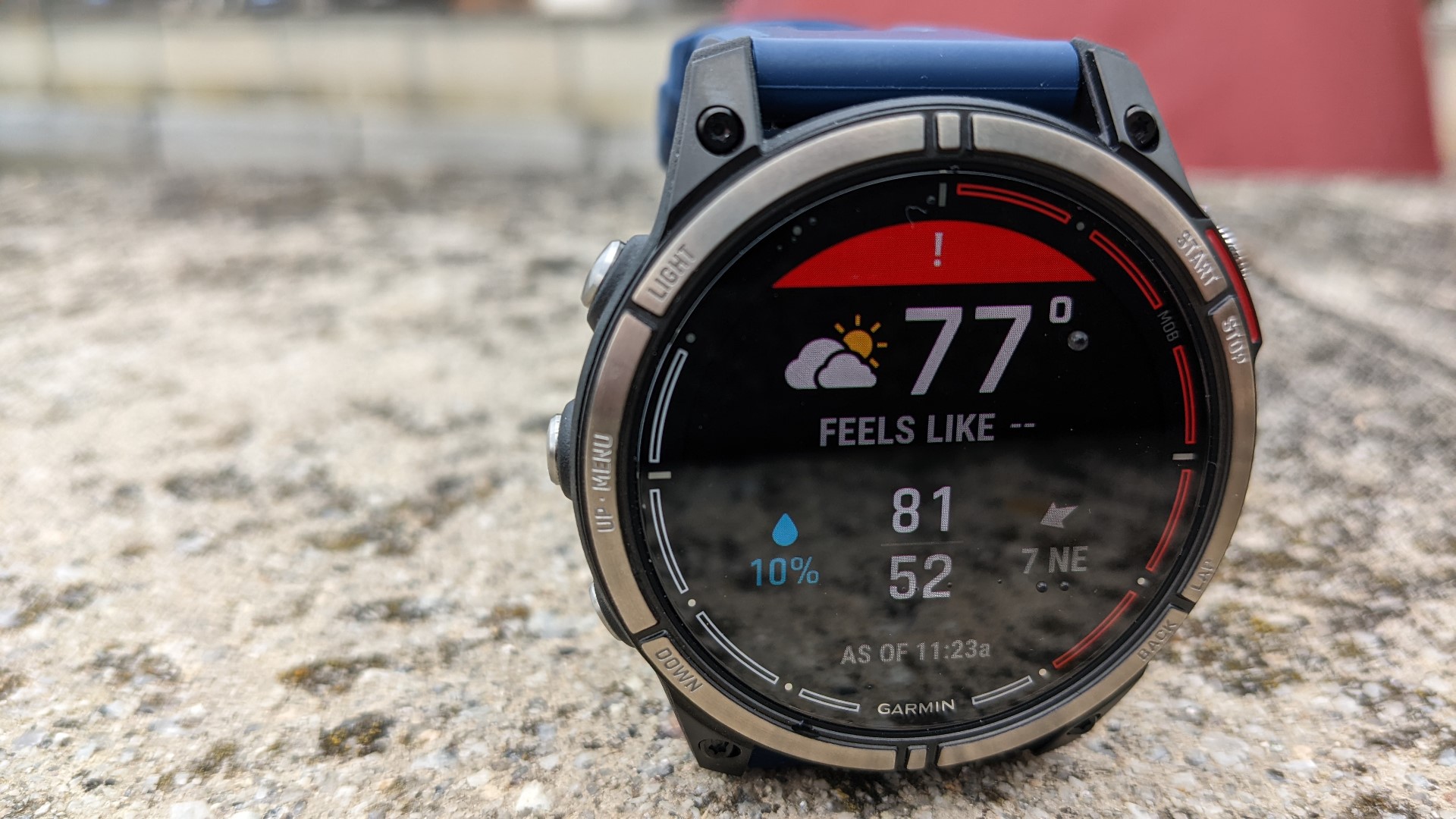
Garmin quatix 7 Sapphire Review: screen
The big news here is the screen, which marks a dramatic change of pace for Garmin, as it’s not only searingly bright and pretty, but also touch-sensitive. This makes the Garmin quatix 7 sapphire into more of a smartwatch than previous Garmins, allowing you to swipe through menus, tap to select, and zoom around maps.

Garmin quatix 7 Sapphire Review: battery life
As ever with a high-end GPS smartwatch, battery life is a moveable feast. With all satellite systems and music fired up you’ll burn through a full charge in just under 10 hours (9 hours always-on), but in battery saver watch mode you’ll eke out up to 21 days – although most of the functionality is turned off to achieve that, making it an emergency decision. In everyday testing, I found that the Garmin quatix 7 sapphire demanded a charge every few days (depending on specific use cases), which is quite a bit shorter than other recent Garmins I've tested. Clearly that always-on AMOLED is pretty thirsty, although Garmin specifically calls this out in marketing, claiming that it has no impact.

Garmin quatix 7 Sapphire review: marine toolkit
The older Garmin Quatix was essentially a Garmin Fenix 6X with some marine specialisms – that's not a criticism, as the Fenix was one of the best GPS watches going at the time. The new quatix packs all the tools I've already mentioned, as well as some brand new maritime weaponry.

The new tide data and alerts are arguably the most broadly useful, handy for any sea-based navigator, from swimmer to paddle boarder, kayaker to sailor. The latter will undoubtedly be more interested in the new anchor drag alarm, which sends alerts to the watch if the anchor drags – an event that any sailor would be happy to be woken because of.
Similarly, the multi continent topo maps have clearly got the yachtsman in mind, and the ability to explore detailed contour mapping around the globe in such a small package is pretty mind-blowing in context. Finally, upgrades to the existing multi-band GPS will help in more remote areas, and particularly to get a fast fix in more exotic global waters by cross-referencing available networks.
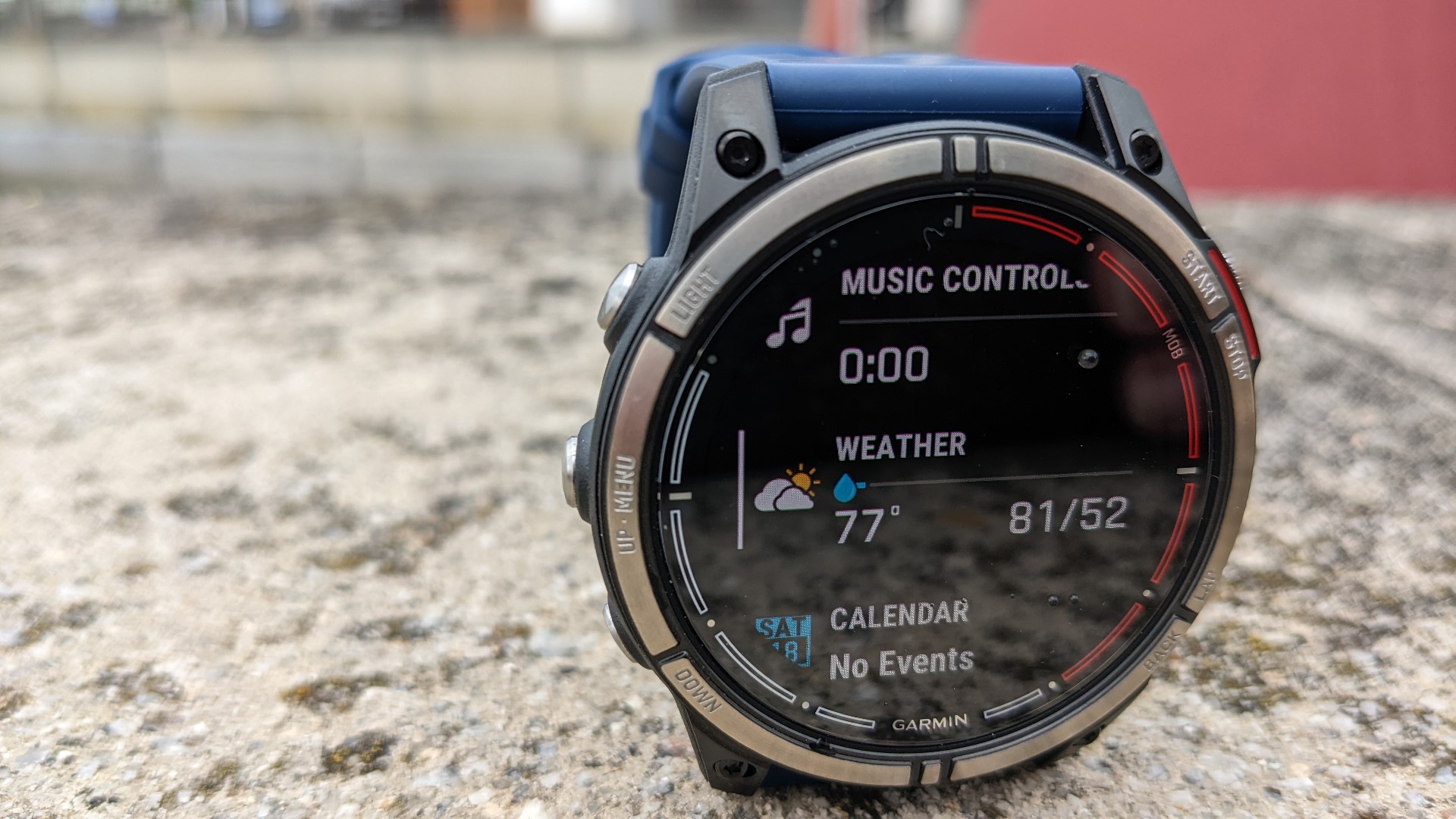
As with previous models, there's extensive integration with boat-based systems, most notably Garmin chartplotters and Fusion audio stacks, the latter via a built-in Fusion-Link Lite app. The result is an onboard smorgasbord of functionality, from remote control of core MFD features, including chart zoom, layout shortcut, and autopilot, to real-time data such as water depth, engine RPM and wind all on your wrist. A neat trick within this flurry of features is to be able to use the watch to place chartplotter waypoints from anywhere on the boat – no need to return to the helm.
It's an impressive list of features, but you will need a compatible boat system to get the most out of this, which will have to be one of the following: GPSMAP 7x2/7x3/9x2/9x3/12x2/12x3 Plus, GPSMAP 10x2/12x2, GPSMAP 74/7600, GPSMAP 84/8600, GHC 20, GNX™ Wind, GNT 10.
It's a fair list, but does narrow down the appeal somewhat, although if you do have a boat with a compatible system, it's an absolute no-brainer.
Garmin quatix 7 Sapphire review: specs
Size: 47 x 47 x 14.5mm
Display: 1.3" (33.02mm) AMOLED touchscreen
Weight: 70g (47g, case only)
Max battery life: 16 days (smartwatch mode), 21 days (battery saver mode), 14 days (expedition GPS mode)
Waterproof: 10ATM
Memory: 32GB
Lens: sapphire crystal
Bezel: titanium
Garmin quatix 7 Sapphire Review: alternatives to consider
It’s an interesting market for the Garmin quatix 7, which as an outdoors watch with activity trackers comes up against Suunto and a host of Amazfit T-rex-style devices, but as a 'marine' smartwatch is in a class of one. The older Quatix 6 was an excellent crossover device, and would offer a strong alternative if budget was a consideration. That said, the number of folk out there looking for a Fusion-compatible watch on a budget is likely to be very small indeed.
Garmin quatix 7 Sapphire Review: verdict
I'm a fan of the Garmin multi-sport platform, the endless options that have been nicely hidden over the years to aid easy navigation. I like the coaching tools, the huge array of useful sensors (HR, blood oximeter and Vo2 max calculators especially), and I also like the reliability that rarely lets you down. The Garmin quatix 7 Sapphire adds in a touchscreen and marine tools to the mix, but without really compromising the wider platform, which is in itself no mean feat. The new screen is really rather nice, but it does eat into battery life faster than I'd like (although the yardstick is the almost endless battery life of the Garmin Fenix 6X pro solar, which is slightly unfair).
Anyway, as highlighted above, if you’re in the market for a 'marine' watch that integrates with Garmin boat equipment then a quatix is pretty much your only option. For a keen paddle boarder or kayaker the tide times and mapping would also be useful, and the Garmin quatix 7 sapphire is no slouch on land either. Overall this is a powerful evolution of a winning formula.

Mark Mayne has been covering tech, gadgets and outdoor innovation for longer than he can remember. A keen climber, mountaineer and scuba diver, he is also a dedicated weather enthusiast and flapjack consumption expert.